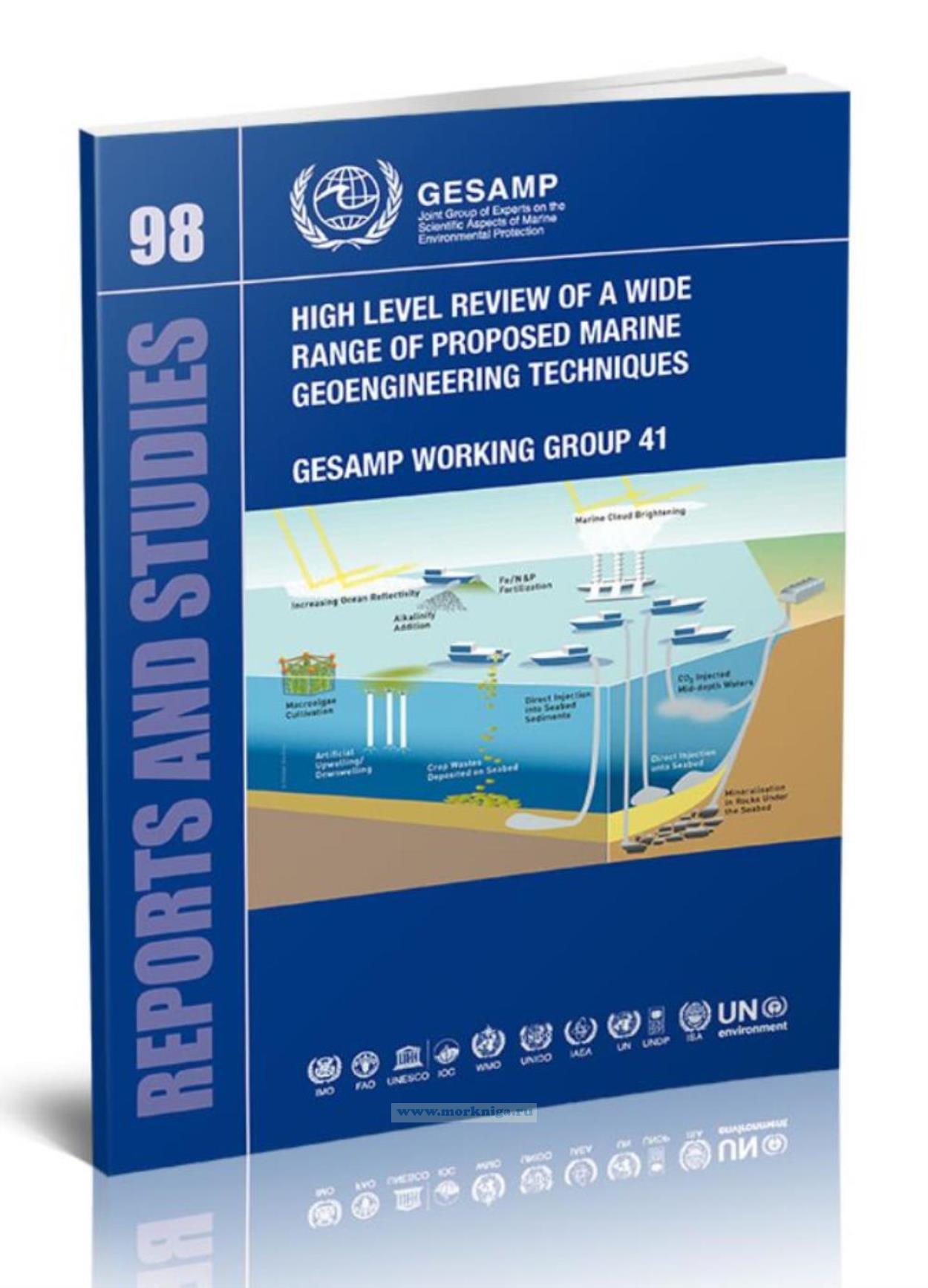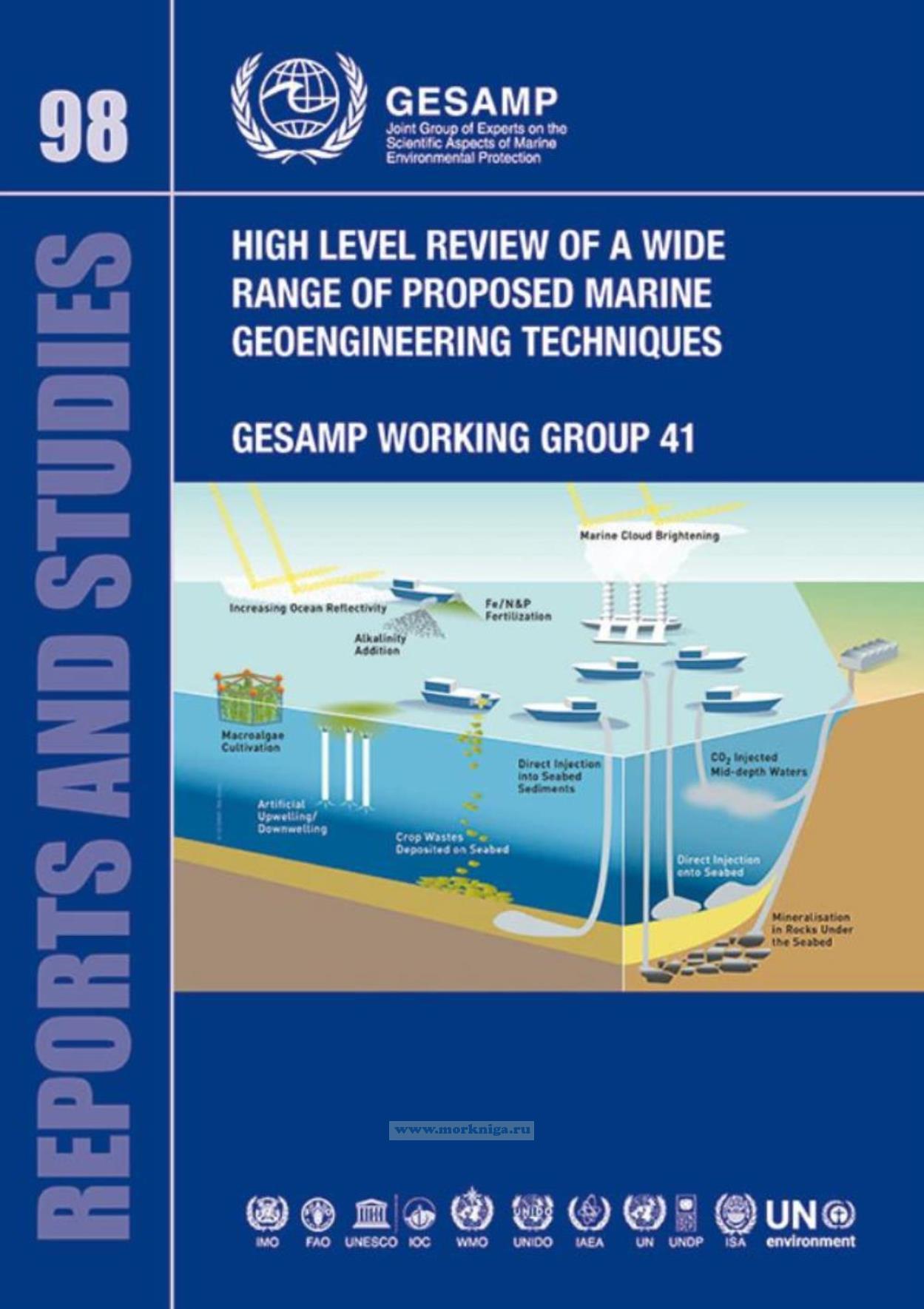Сб с 10 до 16
High Level Review of a Wide Range of Proposed Marine Geoengineering Techniques/Обзор на высоком уровне широкого спектра предлагаемых методов морской геоинженерии
Книга на английском языке.
This report comprehensively examines a wide range of marine geoengineering techniques to remove carbon dioxide from the atmosphere or boost the reflection of incoming solar radiation to space (albedo modification) or in some cases bothFurther, the report recommends a) that a coordinated framework for proposing marine geoengineering activities, submitting supporting evidence and integrating independent expert assessment must be developed and b) that a greater expertise on wider societal issues is sought with the aim to establish a knowledge base and provide a subsequent analysis of the major gaps in socio-economics and geopolitics.
Contents
List of Figures
List of Tables
List of Boxes
Acknowledgements
Executive Summary
1 Background To The Gesamp Wg Review
1.1 Climate change and the ocean
1.2 The ocean - why it is important
1.3 The suitability of the ocean for geoengineering
1.4 London Convention/London Protocol policy involvement with climate change
1.5 The Paris Agreement15
2 Geoengineering And The Oceans
2.1 What is geoengineering?
2.2 Geoengineering - An issue of international concern
2.3 Why we are likely to need geoengineering to counter climate change
2.4 Marine geoengineering
3 Marine Geoengineering Techniques - Issues For Their Assessment
3.1 Range of marine geoengineering techniques
3.2 Scale of research
3.3 Knowledge to permit scientific assessment of marine geoengineering techniques
3.4 Modes of assessment of marine geoengineering approaches
3.5 The need for a holistic assessment of marine geoengineering methods
3.6 Interactions between marine geoengineering techniques
4 Methodology For Ranking Marine Geoengineering Techniques
4.1 Criteria to be used to assess the proposed techniques
4.2 Marine geoengineering techniques to include in an assessment
4.3 Assessment of a wide range of marine geoengineering techniques
4.4 Transitioning towards a detailed assessment of a subset of approaches
4.5 Pitfalls of selection of a subset of approaches based on incomplete knowledge
4.6 Surmounting the knowledge gaps: employing illustrative examples across categories
4.7 Rationale for selecting illustrative examples
4.8 Distilling the criteria for evaluation
4.9 Evaluation of eight illustrative marine geoengineering methods
4.10 Convergence and divergences between marine geoengineering approaches
4.11 Nature of the knowledge gaps across methods
5 Assessment Of Individual Marine Geoengineering Techniques
5.1 Ocean fertilization - iron
5.2 Ocean fertilization - macro-nutrients - nitrogen and phosphorus
5.3 Ocean fertilization - fertilization for fish stock enhancement
5.4 Carbon storage in the ocean - liquid CO2 placed in mid/deep ocean depths
5.5 Carbon Storage in the Ocean - Liquid CO2 Placed on the Seabed
5.6 Carbon storage in the ocean - liquid/solid CO2 placed into unconsolidated deep-sea sediments
5.7 Carbon storage in the ocean - mineralisation of CO2 in geologic structures beneath the seabed
5.8 Carbon storage in the ocean - depositing crop wastes in the deep ocean
5.9 Carbon storage in the ocean - macroalgal cultivation for sequestration and/or biofuels
5.10 Ocean pumping - artificial upwelling
5.11 Ocean pumping - ocean carbon capture and storage
5.12 Ocean pumping - artificial downwelling
5.13 Enhancing ocean alkalinity
5.14 Methane Capture and Destruction/Degradation
5.15 Increasing ocean albedo - reflective particles, microbubbles, foams, ice and reflective algal blooms
5.16 Increasing ocean albedo - marine cloud brightening
5.17 Other techniques - Ocean thermal energy conversion (OTEC)
5.18 Other techniques - deep water source cooling / sea water air conditioning
6 Revisiting The Assessment Framework
6.1 Suitability of the application of the LC/LP Ocean Fertilization Assessment Framework to other methods
6.2 The existing LC/LP two-step assessment for the Ocean Fertilization Assessment Framework (OFAF)
6.3 Utility of developing a pre-assessment framework
6.4 Structured guidance - initial thoughts on development of a questionnaire
6.5 Legitimization through holistic participation in governance frameworks
7 Towards A Holistic Approach To Assessing Marine Geoengineering
7.1 Introduction
7.2 Summary of prior studies into other aspects of geoengineering
7.3 Geoengineering: geopolitical considerations and belief systems
7.4 Welfare endpoints and the economics of geoengineering
7.5 Navigating the science-policy boundary
7.6 Inclusion of broader issues within the assessment framework
8 Governance Of Marine Geoengineering
8.1 International law
8.1.1 Customary international law
8.1.2 The United Nations Framework Convention on Climate Change (UNFCCC)
8.1.3 The Paris Agreement15
8.1.4 The United Nations Convention on the Law of the Sea (UNCLOS)
8.1.5 The London Convention72 and the London Protocol96
8.1.6 The Convention on Biodiversity (CBD)
8.2 Non-binding principles/codes of conduct
8.2.1 The precautionary principle/approach
8.2.2 The Oxford Principles
8.2.3 The Asilomar Principles
8.2.4 The code of conduct developed by the Geoengineering Research Governance (GRGP) project
8.2.5 The Carnegie Climate Geoengineering Governance Initiative (C2G2)
8.3 Governance requirements for marine geoengineering beyond climate mitigation
8.4 Distinguishing between research into geoengineering and its deployment
9 Recommendations For Future Wg Activities
10 References
Annex I Membership Of Gesamp Working Group Wg On Marine Geoengineering
Annex II Working Group Terms Of Reference
Annex III Brief Reviews Of Geoengineering From09
Annex IV Geoengineering Research Programmes
Annex V Initial Methodology For Ranking Marine Ngeoengineering Techniques
Annex VI Glossary
Annex VII Acronyms
Annex VIII Abbreviations
Annex IX Gesamp Reports And Studies Publications

